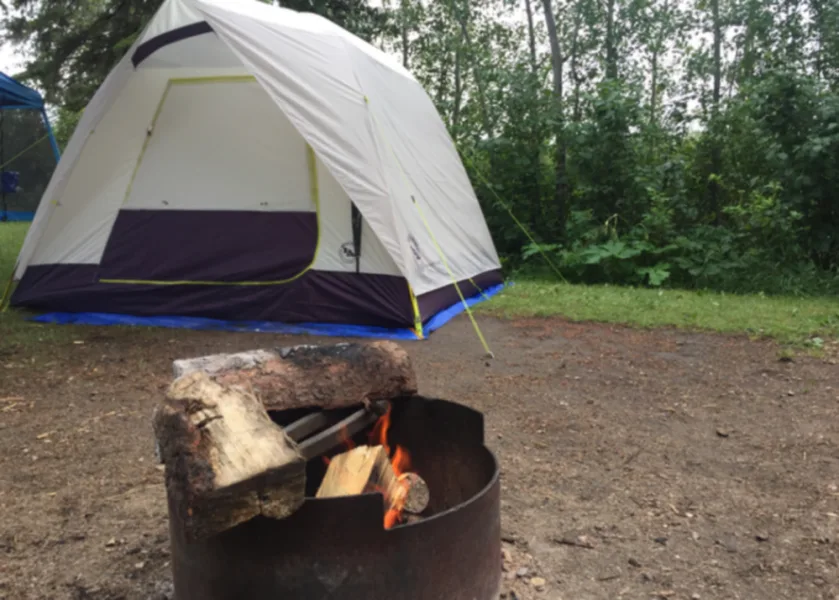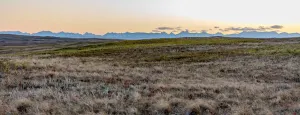
Camping in Cottage Country? There are a few things to keep in mind
It’s 2019, and everyone knows that we shouldn’t litter, we should walk more and drive less, and we need to take better care of the environment. These, and many other sustainable practices are public knowledge, but not enough people know about or follow the Leave No Trace guidelines when they are interacting with the outdoors.
These guidelines have been set out by the Leave No Trace Center for Outdoor Ethics, and they were originally developed for people who were backcountry camping. Since then the set of ethics has been adapted and applied to many of the different ways that people experience nature. The original set of rules still stands, and since then a set of “frontcountry” camping guidelines has also been established.
Seeing as Leave No Trace has covered back- and frontcountry we figured we would take on the guidelines for cottage country.
BE INFORMED
Know what is happening around your cottage. Keep an eye on the news for warnings and reports about ticks and other potentially harmful species, fire bans, water quality for swimming, and wildlife sightings. Being in the know means that you will be less likely to get caught in an unexpected situation and more educated on what to do if you are caught in one.
STICK TO MARKED TRAILS
If you decide to go on a hike, stick to the trails. Maintained trails make things safer for everyone and everything. For starters, you are less likely to get lost if you are hiking a well-marked path. In the event that you get hurt while hiking, being able to accurately describe your location will make it easier for people to quickly come to your aid.
When you stay on the trail you give plants the chance to grow instead of being trampled by off-roading hikers. Trail Closed signs are not suggestions. There is always a reason that sign is there, whether it’s because the trail is damaged, making it too risky to walk on, or crews are doing maintenance work on it, or the terrain is too delicate for foot traffic right now.
Finally, don’t cut the switchbacks! Switchback trails are designed in a zigzag pattern on steep parts of a trail. They help to prevent soil erosion, keeping our trails looking nicer for longer. Although they may take longer to hike, they are better for the environment and, believe it or not, easier on our bodies.
PACK IT IN, PACK IT OUT
What you bring on the trail, to the beach, or down to the lake, should also be leaving with you. You should bring everything back to the cottage even biodegradable items, such as apple cores and orange peels, to be properly disposed of. If you are bringing your furry friends with you anywhere, be sure to pick up any pet waste and toss it in the garbage.
TAKE NOTHING BUT MEMORIES
Although it might be tempting to decorate the cottage with rocks, flowers, and leaves from the outdoors, they aren’t our property to take. Leaving nature where it is gives the opportunity for other people (and critters) to enjoy it too.
Help to keep living trees healthy by not stripping bark, breaking branches, or carving into tree trunks. Also, if you are hanging a hammock, be sure to use wide straps to do as little damage as possible to the tree’s bark.
BE FIRE SMART
The first step to starting a fire is making sure you have a way to put out the fire. Have a large bucket of water on hand to extinguish the fire when you are done with it. Make sure a fire is fully extinguished before leaving it; even hot embers can reignite on their own, burning anything still left in the pit, and result in an unattended fire.
It pretty much goes without saying, but never leave a fire unattended: any fire can quickly get out of hand if left alone. Be sure to use local firewood either bought or collected (if permitted); bringing firewood from somewhere else can also bring non-native insects and diseases to the live trees at your cottage.
A fire is not a trash can; just because you can burn something doesn’t mean you should. Burning items such as plastic, Styrofoam, and paper with coloured print release harmful chemicals into the air. This is not only bad for the environment and our lungs, but we wouldn’t recommend cooking over burning chemicals. And what’s a fire without s’mores?
WILDLIFE SHOULD BE KEPT WILD
Never approach wild animals. The best outcome is that they get stressed and run away. The worst outcome results in a scared animal feeling the need to protect their food, family, or space by attacking you, resulting in injury or even death.
Wild animals don’t need our help when it comes to food. We might want to be nice and share our leftovers with animals, but that does more harm than good. The animals that eat that food are putting unnatural foods into their bodies, and if the pattern continues they will become reliant on humans for food instead of sourcing their own food.
SHARE YOUR SPACE
The outdoors is automatically a shared space; even if there aren’t any other people around there are living creatures all around us.
Everyone wants to take it easy while they are at the cottage; just be mindful of how children and pets are interacting with other cottagers, pets, wild animals, and nature.
Being friendly and considerate on trails, by the lake, and in other shared spaces makes cottaging a better experience for everyone.
--
This article, written by Taylor Brule, was originally published for Cottage Life









